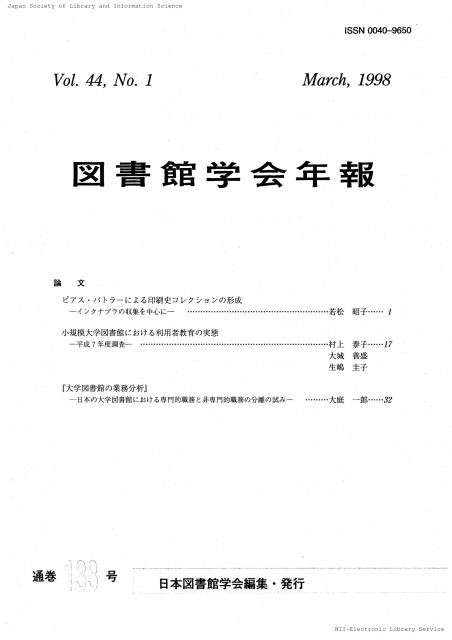Volume 26, Issue 3
Displaying 1-14 of 14 articles from this issue
- |<
- <
- 1
- >
- >|
-
1980Volume 26Issue 3 Pages 97-101
Published: 1980
Released on J-STAGE: October 07, 2022
Download PDF (676K) -
1980Volume 26Issue 3 Pages 102-110
Published: 1980
Released on J-STAGE: October 07, 2022
Download PDF (1099K) -
1980Volume 26Issue 3 Pages 111-119
Published: 1980
Released on J-STAGE: October 07, 2022
Download PDF (1210K) -
1980Volume 26Issue 3 Pages 120-128
Published: 1980
Released on J-STAGE: October 07, 2022
Download PDF (1280K)
-
1980Volume 26Issue 3 Pages 129-135
Published: 1980
Released on J-STAGE: October 07, 2022
Download PDF (734K)
-
1980Volume 26Issue 3 Pages 138-141
Published: 1980
Released on J-STAGE: October 07, 2022
Download PDF (611K)
-
1980Volume 26Issue 3 Pages 101
Published: 1980
Released on J-STAGE: October 07, 2022
Download PDF (128K) -
1980Volume 26Issue 3 Pages 110
Published: 1980
Released on J-STAGE: October 07, 2022
Download PDF (108K) -
1980Volume 26Issue 3 Pages 119
Published: 1980
Released on J-STAGE: October 07, 2022
Download PDF (118K) -
1980Volume 26Issue 3 Pages 136
Published: 1980
Released on J-STAGE: October 07, 2022
Download PDF (115K)
-
1980Volume 26Issue 3 Pages 141-142
Published: 1980
Released on J-STAGE: October 07, 2022
Download PDF (282K) -
1980Volume 26Issue 3 Pages 143-144
Published: 1980
Released on J-STAGE: October 07, 2022
Download PDF (242K)
-
1980Volume 26Issue 3 Pages 128
Published: 1980
Released on J-STAGE: October 07, 2022
Download PDF (129K) -
1980Volume 26Issue 3 Pages 137
Published: 1980
Released on J-STAGE: October 07, 2022
Download PDF (151K)
- |<
- <
- 1
- >
- >|
